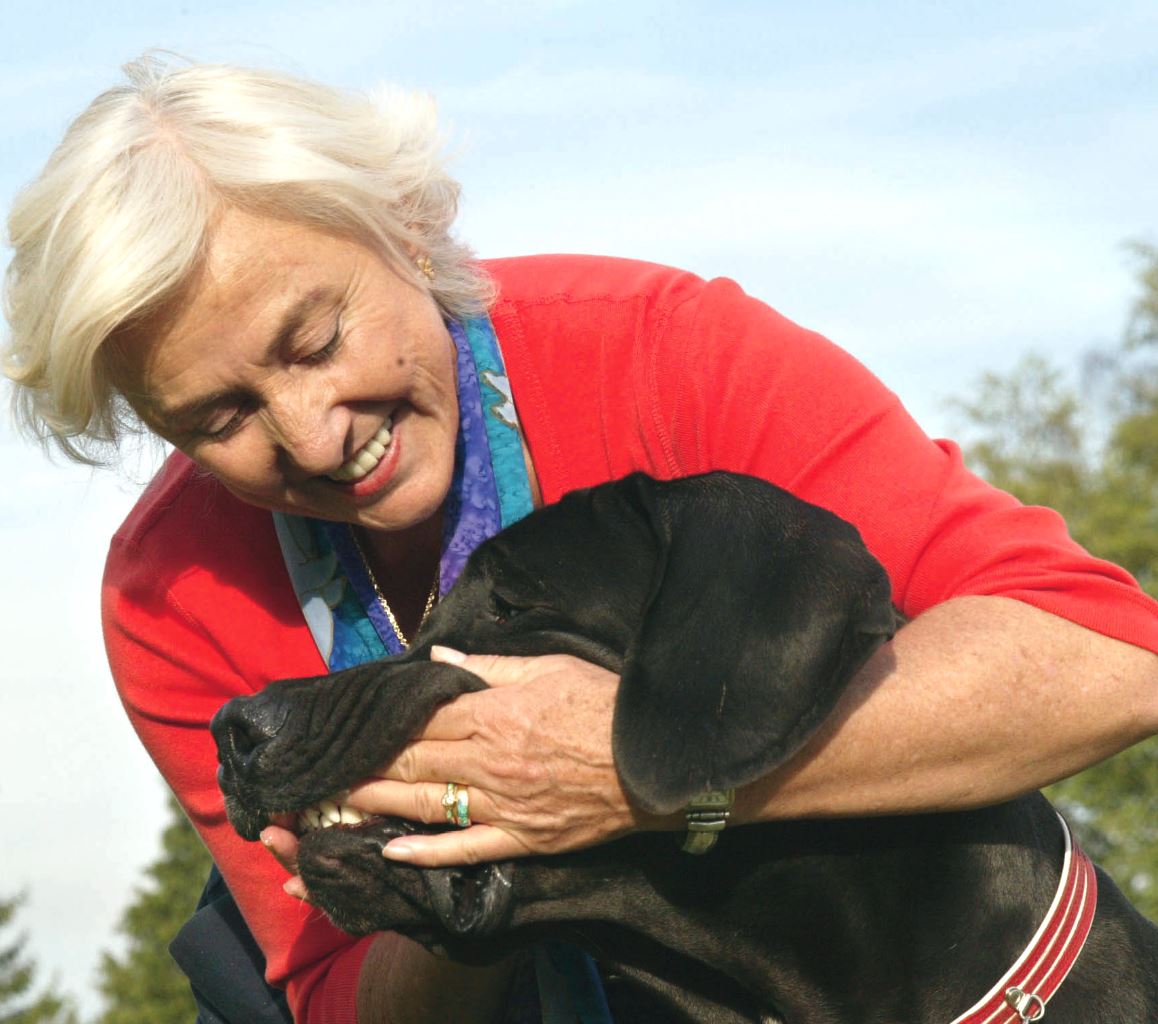Linda Tellington Jones developed the Tellington method more than 30 years ago through
her work with horses. This method is now not only applied to horses, but also to
all other animals – and, as from a few years ago, even to people.
Linda grew up with a lot of animals and tried at an early stage to develop alternatives
to the often brutal training methods. Her work is greatly inspired by Dr Moshe Feldenkrais,
an Israeli physicist. Feldenkrais assumed that people develop habitual patterns
of neuronal responses when they run, talk or learn a sport, for example. Through
Feldenkrais, Tellington-Jones was encouraged to focus her attention on the function
of the nervous system instead of the muscles.
© Gudrun Braun

Subsequently, Linda studied the tests conducted by neurophysiologist Charles Sherrington
and incorporated a new aspect into her work. While Feldenkrais concentrated on the
correlations between the nervous, muscular and skeletal systems, Sherrington emphasised
the importance of the individual cells within the body system. This approach led
to Tellington-Jones working increasingly with different, light touches that have
an effect on the skin and subcutaneous tissue.
In her work with the most varied animals, Linda began to gather experience with
circular TTouches and gradually developed further precisely defined circular, stroking
or lifting touch movements. Linda Tellington-Jones’ sister, Robyn Hood, recorded
these touches in a systematic way and compiled them to form a method that can be
learned.
In her book entitled "Molecules of Emotion", Dr Candace B. Pert (neurologist) describes
emotional reactions to the world being based on bio-molecular, chemical reactions.
This is confirmation of the basis of TTouch because it proves that our cells store
emotions and are linked to the brain via chemical receptors. Receptors are not immutable,
even emotionally deadlocked, there is always a biochemical possibility for change
and further development. It is therefore possible to relieve anxiety and all possible
past experiences of physical to emotional pain at the level of the cells. That is
also the reason why the TTouch is so successful. The aim of the Tellington method
is to activate the life force and function of the body’s cells and arouse their
intelligence so as to establish a physical, mental and emotional balance.
The Tellington method is a training system that intensifies the partnership between
people and our pets. The special body and ground work creates greater body awareness,
inner balance, better performance and robust health. It helps to remove old patterns
of behaviour, rebuilds the bond and can transform anxiety into security, aggression
into calmness and loneliness into togetherness.
The Tellington method involves two different areas
-
The “Tellington TTouch”,
in which the skin is moved 1 ¼ circles against the underlying tissue, has a positive
effect on the muscles, the nervous system and each individual cell of the body.
The basic TTouch is easy to do for everyone and produces amazing results after just
a few applications. There are more than 30 different TTouches in total, each with
ten pressure strengths.
Tests via various EEG's (electroencephalograms that measure brain waves) and blood
tests have now also proven the effects of the Tellington TTouch in animals scientifically.
In brain wave measurements, it was possible to determine a correlation between the
Tellington TTouch and the "Awakened Mind State". The "Awakened Mind State" is a
state in which all four brain waves are active at the same time in a particular
pattern. This state has also been detected in humans when they are very inspired
and creative.
-
Ground work
In the ground work, dogs are guided over unusual obstacles, such as a maze, star
and poles at different intervals and heights. The point of the ground work is to
activate free brain capacity through unusual movements and remove old patterns of
behaviour through small, concentrated movements, replacing them with new ones. The
movements are carried out in a very concentrated way and mostly more slowly than
usual.
© Gudrun Braun

The Tellington method is like a non-verbal language between the person and the animal.
Just a few minutes of Tellington TTouch per day can achieve astonishing changes.
Tellington TTouch is now used by amateurs, professionals and veterinary surgeons
in 24 countries on four continents. One of the unique aspects of the Tellington
method is that it can be used by everyone – regardless of their experience – for
any breed of dog in any discipline.
Further information about the Tellington method as well as a list of the trained
TTouch practitioners and courses currently offered can be found at
www.tellington.at.
Text: Mag. Gudrun Braun in Unsere Hunde
Tellington Practitioner for Small Animals
© Gudrun Braun

© Gudrun Braun

© Gudrun Braun
